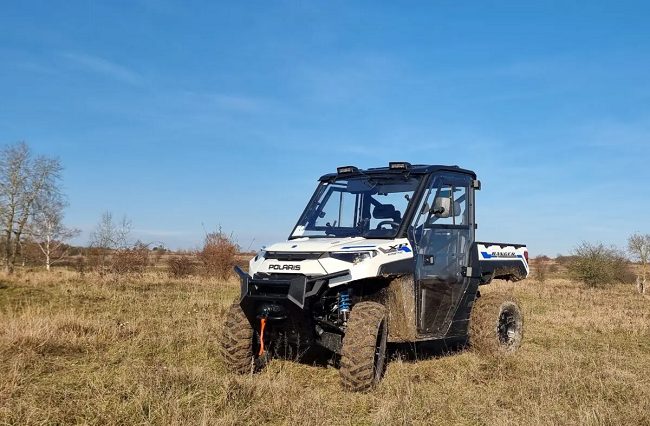The European Serengeti, the large herbivore reserve, has made an important step towards its zero-emission functioning with the adoption of an electric vehicle designed for work in tough off-road conditions. The vehicle began serving the conservationists on Monday, December 30, 2024, to take care of vast expanses of naturally valuable territory, to maintain it and to conduct regular inspections.

“The advantage of an electric vehicle is its quiet operation, which does not disturb animals, and mainly its zero emissions. So, the normal running of the reserve will not entail greenhouse gas emissions and smog polluting the air,” said Dalibor Dostal, director of the conservation organisation European Wildlife, which founded the large ungulate reserve in Milovice in cooperation with scientists in 2015.
“This year, climate change also showed its destructive force in Europe, where devastating floods in Valencia, Spain, claimed hundreds of human lives. That’s why all of us should strive to do more in order to mitigate the impacts of climate change. And conservation organisations, just as public institutions not only from the sphere of nature conservation, should set an example,” added Dostal.
European Wildlife has reduced local emissions related to the normal operation of the reserve to zero during this year. Pumping water into the oldest watering place, which had been performed by a diesel genset until recently, has been replaced by electrification involving the laying of an underground cable. In terms of technology, the reserve has changed over to battery-powered tools, including brush cutters. The transition to zero-emission normal operation has now been completed by the deployment of the electric vehicle for daily operation in the reserve.
“We don’t plan to buy any more ICE vehicles or equipment other than zero-emission equipment in the future, either,” noted Dostal.
The reserve also wants to change over to zero-emission operation with respect to short-term, one-off activities such as excursions for visitors in an off-road vehicle or the work of an excavator when cleaning up the reserve or removing expansive shrubs.
“We’re currently verifying the possibility of converting the vehicle for excursions or catching animals into an electrically driven vehicle. At this year’s e-salon trade fair, we also examined the possibilities of manufacturers to deliver an electrically driven excavator,” added Dalibor Dostal.
No smog in the reserve is essential for local biodiversity. The problem is that emissions from internal combustion engines increase the nitrogen content of the soil, which results in weeds growing and rare flowers being suppressed.
The conservation organisation chose the electric vehicle for off-road work, i.e. a vehicle in the UTV category, based on a tender. The technical requirements were best fulfilled by a Polaris Ranger Kinetic battery vehicle.
